This article was co-authored by Mayami Oyanagi. Mayami Oyanagi is a Physical Therapist and the owner of PT STOP Physical Therapy & Wellness, an individualized physical therapy practice in Los Angeles, California. With over 14 years of experience, Mayami specializes in orthopedic injuries, manual therapy, and sports medicine. She holds an MS in Physical Therapy from the University of Hartford. Mayami is also a board certified Orthopedic Clinical Specialist. She treats the root cause of her client’s problems by utilizing biomechanical assessments.
There are 13 references cited in this article, which can be found at the bottom of the page.
wikiHow marks an article as reader-approved once it receives enough positive feedback. This article received 18 testimonials and 100% of readers who voted found it helpful, earning it our reader-approved status.
This article has been viewed 377,837 times.
The human foot is made of 26 bones and approximately 100 muscles, tendons, and ligaments. It is also the part of the body that bears the most weight, so it is not uncommon to suffer from foot pain or diagnosed foot problems at some point in your life. Painful foot problems include bunions, pronation, fallen arches, hammertoes, plantar fasciitis and tight, cramping muscles. You can fix many of these problems by performing foot exercises to stretch the muscles and reduce tension.
Steps
Performing Foot Strengthening Exercises
-
1Seek advice. If you are experiencing foot or ankle pain, you need to get advice from your doctor or podiatrist. If the pain does not go away, even with rest, ice, and elevation, you may have a fracture. This is even more likely if there is swelling, bruising, or discoloration. You will need to seek medical treatment and get an X-ray to confirm or rule out this possibility.
- If you do have a fracture or other injury such as the ones mentioned above, ask your doctor if there are prescribed physical therapy exercises that you can do.[1]
-
2Try toe lifts. Sit in a chair with your feet flat on the floor. Lift your big toe up off the floor slightly while leaving the other four down. Practice this to the point where you can eventually raise up all five toes, one at the time, beginning with the big toe and ending with the fifth toe. Then practice lowering each toe one at a time, beginning with the fifth toe and ending with the big toe. Do two sets of 15.
- If you find this difficult at first, just raise your big toe up and down until you get the hang of it. Move slowly through your toes, working up to where you can do all five.
- This exercise is meant to strengthen the extenders, one of the groups of muscles which move the toes up and down. Strong extenders and flexors can help greatly with gait and balance and thus help prevent foot injuries from accidents, according to the Summit Medical Group.[2] [3]
Advertisement -
3Do toe curls. Place a towel on the ground under your right foot. Stretch your toes out and pull them back in to grip the material with your toes. Lift the cloth one to two inches off the ground and hold for five seconds. Lower it to the ground. Repeat five times. Then repeat on the left side.
- Relax your muscles between each grip.
- Work up to holding the grip for 10 seconds at a time.
- Toe curls focus primarily on strengthening the toe flexors.
-
4Pick up marbles. Place 20 marbles and a small bowl on the ground. Sit on the couch or in a chair, relaxed all the way back. With one foot, pick up one marble at a time and place it in the bowl. Then empty the marbles out and do the same thing with your other foot. This exercise will strengthen the intrinsic and extrinsic muscles in the feet. It is also helpful for plantar fasciitis but also for injuries like turf toe, a term use for injury to the great toe caused by hyperextension.[4] [5]
-
5Write the alphabet. Sit on the couch, relaxed against the back. Extend one of your legs and raise one foot several inches off the ground. Trace the alphabet in the air using your big toe as a “pencil.” Then switch legs and do the same with the opposite big toe. This exercise helps to strengthen the extensor and flexor muscles in the foot.
- It can also help with plantar fasciitis and turf toe, among other foot conditions. It is especially effective in ankle rehabilitation.
- Keep your movements small. Just use your ankle, foot, and toe.[6]
-
6Do a toe extension. Wrap a rubber band around the middle of all five of your toes on your right foot. It should have medium resistance so that it will give slightly. Stretch all of your toes apart. This will cause the band to stretch as far as it will go. Hold the stretch for five seconds and then relax your toes. Perform this stretch five times on each foot.
- Make sure to relax for approximately five seconds.
- This strengthens the extrinsic and intrinsic muscles of the foot and is used in the treatment of both plantar fasciitis and turf toe.[7]
-
7Try a big toe pull. Loop the rubber band between the big toe on your right foot and the big toe on your left. Place your feet together. Pull your toes apart while trying to keep your ankles together. Stretch the rubber band as far as you can, then relax. Relax for five seconds in between stretches and repeat five times.
- This exercise strengthens the extrinsic and intrinsic muscles in the feet.
-
8Do resistant ankle inversion. Sit on the floor with legs stretched out in front of you. Attach one end of a therapy band to a stationary object, such as the leg of a heavy table. The table should be beside you, down at your feet. Loop the other end of the band around the ball of your foot. The table leg will be off to the side. The loop of the band will wrap around the ball of your foot and extend out beside you toward the table. Using the band for resistance, move your ankle away from the table, pulling against the band to stretch it out.
- Do two sets of 15.
- This exercise can help to strengthen the malleolus and tibialis muscles on either side of the ankle. It can also help prevent or treat sprains.[8]
-
9Perform resistant ankle eversion. This exercise is very similar to the inversion. Sit on the floor with legs stretched out in front of you. With the band in the same position as with the inversion, move the loop of the resistance band down so that it is against the arch of the foot instead of the ball. Move your foot up and out against the therapy band.
- Do two sets of 15.
- This exercise can help to strengthen the peroneal and tibialis muscles on both sides of your ankle. It can also help treat or prevent sprains.[9]
-
10Do calf raises. Stand straight in front of a wall, counter, or other stable object. Place your hands gently on the wall in front of you. Raise yourself onto your toes in a calf raise exercise. From this raised-toe position, lower your feet to the ground again while keeping yourself balanced with your hands against the wall. Repeat 10 times, making sure to lower yourself slowly to the ground.
Doing Foot and Ankle Stretching Exercises
-
1Test your ankle range of motion. Sit with your legs stretched straight out in front of you. Without moving legs, point your feet backward towards your body as far as they will comfortably go. Hold for 10 seconds. Then, point your toes down away from your body. Hold for 10 more seconds. Next, point toes towards the opposite foot and hold for 10 seconds. Then, point your toes away from the opposite foot and hold for 10 more seconds. Lastly, move the ankles 10 times clockwise and 10 times counterclockwise.
- This exercise was developed by the Summit Medical Group, a rehabilitation center, to help increase the range of motion or flexibility of the ankles.
- According to Summit, increased flexibility and strength in the ankle muscles, especially the tibialis muscles, can help to greatly reduce injuries such as sprains.
- Use this series as a warm-up for the remaining stretching exercises.
-
2Do plantar flexion. This stretch is similar to the warm up, but it is a more targeted stretch. Sit against the couch with your feet straight out in front of you, so that they are perpendicular to your legs. Flex your feet back towards you as far as they will go while keeping your legs flat on the ground. Try to keep your feet extended, so your toes and heels move in a straight line. Hold for five seconds. Relax and then push your toes away from the body as far as they will go.
- Repeat 15 times, moving both feet at the same time. You can also do this exercise while you are lying down.
- To get a deeper stretch, you can use an elastic band.
- Pointing the toes away from the body helps to strengthen the muscles in the calves.
-
3Try dorsiflexion. Sit in a chair and flex your right foot. Loop a large towel under your foot. Pull on the ends of the towel and pull it toward you. Stretch your toes towards you as far as you can while remaining comfortable. Hold stretch for 10 seconds and repeat 3 times with each foot.
- This stretches the muscles in the shins. Flexible shins, like calves, are important for full recovery from plantar fasciitis.
- You can also do this with a resistance band on the floor. Hook the band around a table leg. Walk away from the table and loop your foot in the band. Bring your toes toward you, pulling against the band.[12]
- This is designed to stretch out the flexors muscles in the foot, which help you move the feet in relation to the leg.[13]
-
4Do an Achilles stretch. Stand on a stair. Move until you are only standing on the stair with the balls of your feet. Hold onto the railings or wall on both sides for balance. Slowly lower your heel towards the step below you until you feel the stretching in the calf muscles. Hold this pose for 15-30 seconds, then relax. Do three reps.
- This exercise helps stretch out the muscles of the calf. Calf muscle stretching, according to the American Orthopedic Foot and Ankle Society, is integral to the treatment of plantar fasciitis. This is because excessively tight calf muscles make it more difficult to properly flex and stretch the heel. This is necessary to help recover from this painful condition. [14] [15]
-
5Perform a standing calf stretch. Stand facing the wall with hands resting on the wall for balance. Step forward with one leg and bend the knee slightly. Stretch the other leg behind you so that your heel is resting on the floor. Then, lean slowly into the wall until you feel the stretching in your calf. Hold for 15–30 seconds and do three reps.
- This exercise stretches the soleus, one of the major muscles in the calf.[16] .
-
6Stretch your toe flexors. Stand facing the wall, placing your hands on the wall for balance. Stretch your leg out behind you and point your foot, placing the top of your foot on the ground. Relax and feel the stretching in the ankle. Hold this pose for 15–30 seconds, stopping to rest for a moment if you feel any cramping in the toes. Do three reps on each foot.
- Work yourself up to holding the stance for one minute.
-
7Using a frozen water bottle, roll it back and forth with the arch of the foot from your toes to your heels. You can also use a rolling pin, a can or a tennis ball, for example, but using something cold will help reduce inflammation. You can do this either standing or sitting. This dynamic stretch is great for a long day on your feet or to help relieve stiffness or swelling.
- This exercise will strengthen the plantar fascia and other tissues that help support it, such as the Achilles tendon and calf muscles.
Massaging Your Feet
-
1Know the importance of massage. Doctors and clinics such as the Sports Injuries Clinic endorse foot massage. They are relaxing, but massages also increase circulation to the feet. They also help prevent injuries such as muscle strains or sprains.
-
2Perform a ball roll. Sit on a chair and place a tennis, lacrosse, or golf ball under the ball of your right foot (a tennis ball is probably the most comfortable for your foot). Roll the ball with your feet, moving the ball along the bottom of your foot from ball to heel. Continue the movement for two minutes. You should feel the massage throughout your foot.
- Try moving the ball up and down and in circles to increase the efficacy of the massage. Repeat on left foot for 2 minutes.[17]
-
3Give yourself a plantar fascia massage. While sitting on the chair, place your right foot on top of your left thigh. Use your thumb to gently work circles into your arch. Run your hands up and down your foot, releasing the muscles through the whole foot. Place your fingers between your toes as if you were holding hands with your feet. Keep this position with your toes spread for 30 seconds. Massage each toe to release extra tension.[18]
Exercise Schedule
Expert Q&A
Did you know you can get expert answers for this article?
Unlock expert answers by supporting wikiHow
-
QuestionWhat's a good toe mobility exercise?
 Mayami OyanagiMayami Oyanagi is a Physical Therapist and the owner of PT STOP Physical Therapy & Wellness, an individualized physical therapy practice in Los Angeles, California. With over 14 years of experience, Mayami specializes in orthopedic injuries, manual therapy, and sports medicine. She holds an MS in Physical Therapy from the University of Hartford. Mayami is also a board certified Orthopedic Clinical Specialist. She treats the root cause of her client’s problems by utilizing biomechanical assessments.
Mayami OyanagiMayami Oyanagi is a Physical Therapist and the owner of PT STOP Physical Therapy & Wellness, an individualized physical therapy practice in Los Angeles, California. With over 14 years of experience, Mayami specializes in orthopedic injuries, manual therapy, and sports medicine. She holds an MS in Physical Therapy from the University of Hartford. Mayami is also a board certified Orthopedic Clinical Specialist. She treats the root cause of her client’s problems by utilizing biomechanical assessments.
Physical Therapist
-
QuestionHow can I stretch my ankles?
 Mayami OyanagiMayami Oyanagi is a Physical Therapist and the owner of PT STOP Physical Therapy & Wellness, an individualized physical therapy practice in Los Angeles, California. With over 14 years of experience, Mayami specializes in orthopedic injuries, manual therapy, and sports medicine. She holds an MS in Physical Therapy from the University of Hartford. Mayami is also a board certified Orthopedic Clinical Specialist. She treats the root cause of her client’s problems by utilizing biomechanical assessments.
Mayami OyanagiMayami Oyanagi is a Physical Therapist and the owner of PT STOP Physical Therapy & Wellness, an individualized physical therapy practice in Los Angeles, California. With over 14 years of experience, Mayami specializes in orthopedic injuries, manual therapy, and sports medicine. She holds an MS in Physical Therapy from the University of Hartford. Mayami is also a board certified Orthopedic Clinical Specialist. She treats the root cause of her client’s problems by utilizing biomechanical assessments.
Physical Therapist
References
- ↑ https://www.getwellphysiotherapy.org/injuries-and-physical-therapy/
- ↑ http://www.sportsinjuryclinic.net/rehabilitation-exercises/lower-leg-ankle-exercises/strengthening-exercises-foot
- ↑ http://www.active.com/tennis/Articles/7-Exercises-for-Fitter-Feet.htm?page=2
- ↑ Chinn, L. Rehabilitation of Ankle and Foot Injuries in Athletes. Journal of Clinical Sports Medicine. 2010. 29(1), 157-67
- ↑ http://orthoinfo.aaos.org/PDFs/Rehab_Foot_and_Ankle_4.pdf
- ↑ http://orthoinfo.aaos.org/PDFs/Rehab_Foot_and_Ankle_4.pdf
- ↑ http://www.realsimple.com/health/fitness-exercise/workouts/4-foot-exercises
- ↑ https://myhealth.alberta.ca/Health/aftercareinformation/pages/conditions.aspx?hwid=ad1464
- ↑ https://myhealth.alberta.ca/Health/aftercareinformation/pages/conditions.aspx?hwid=ad1464
- ↑ http://www.realsimple.com/health/fitness-exercise/workouts/4-foot-exercises
- ↑ http://orthoinfo.aaos.org/PDFs/Rehab_Foot_and_Ankle_4.pdf
- ↑ http://orthoinfo.aaos.org/PDFs/Rehab_Foot_and_Ankle_4.pdf
- ↑ http://www.active.com/tennis/Articles/7-Exercises-for-Fitter-Feet.htm?page=2
- ↑ http://orthoinfo.aaos.org/PDFs/Rehab_Foot_and_Ankle_4.pdf
- ↑ http://www.aofas.org/footcaremd/conditions/ailments-of-the-heel/Pages/Plantar-Fasciitis.aspx
- ↑ https://www.mayoclinic.org/diseases-conditions/achilles-tendon-rupture/multimedia/calf-stretch-exercise/img-20008632
- ↑ http://www.active.com/tennis/Articles/7-Exercises-for-Fitter-Feet.htm?page=2
- ↑ https://www.sports-injury-physio.com/post/massage-help-plantar-fasciitis
About This Article
To do physical therapy exercises for your feet, perform toe lifts by sitting in a chair with your feet flat on the floor. Then, lift each toe off the ground in turn, starting with your big toe. You can also do toe curls by placing a towel under your foot on the ground. Next, curl your toes to grip the towel and lift it off the ground. If you want to test your ankle range of motion, stretch out your legs and switch between pointing your toes downwards, sideways, and backwards as far as you can for 10 seconds in each direction. For tips on how to massage your feet, keep reading!
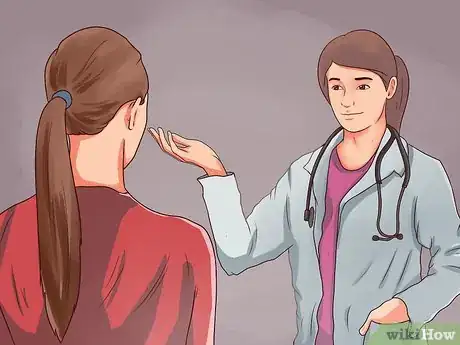

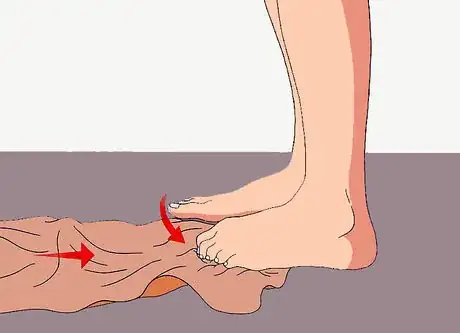

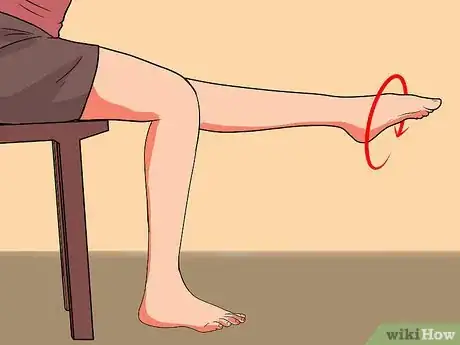
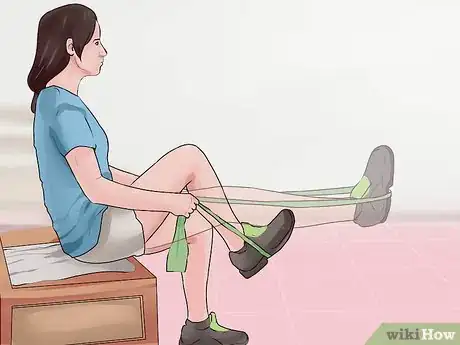
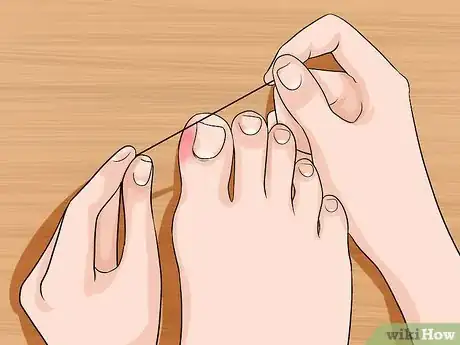
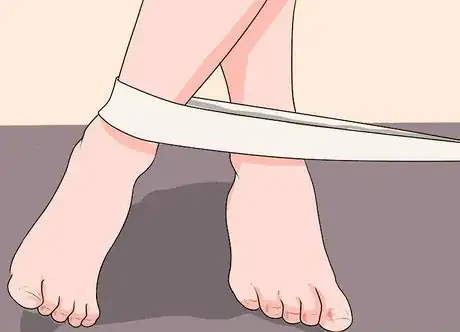


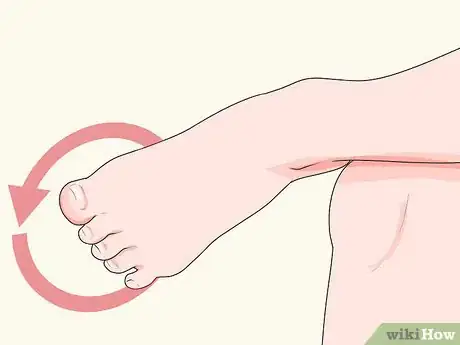
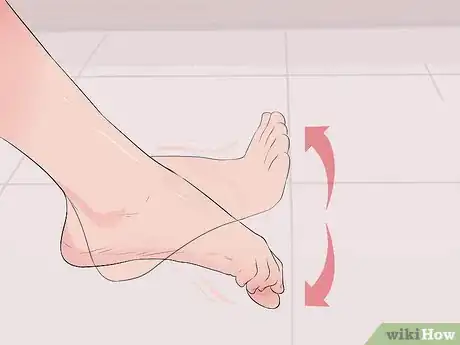


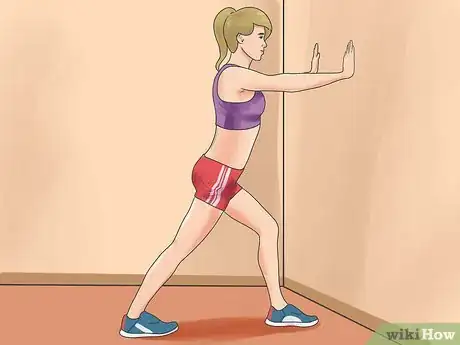
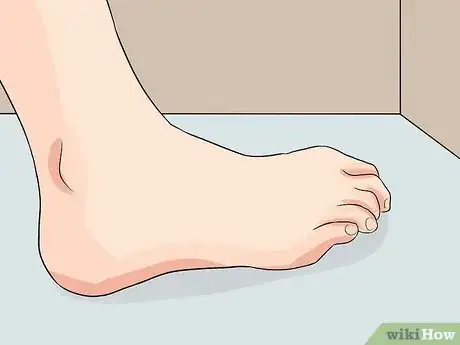

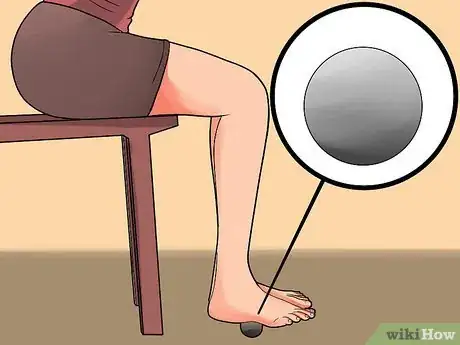
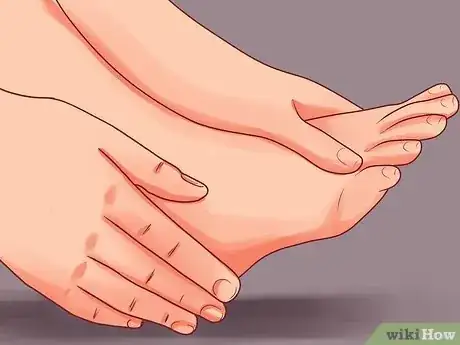

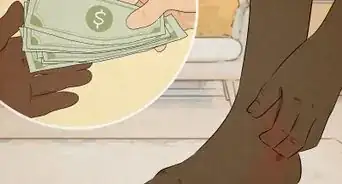
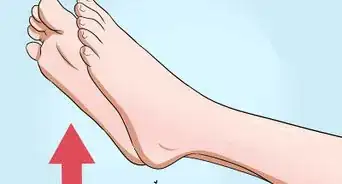
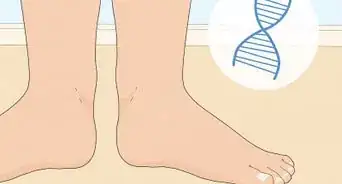

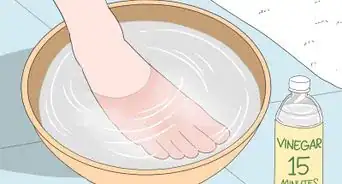
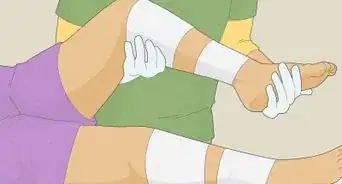
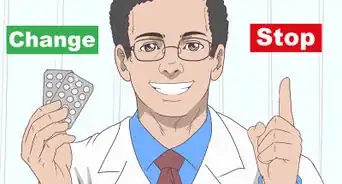

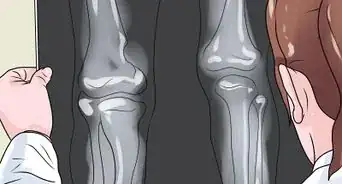
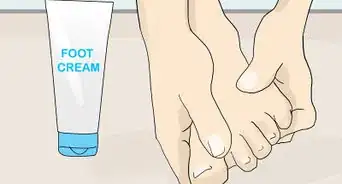

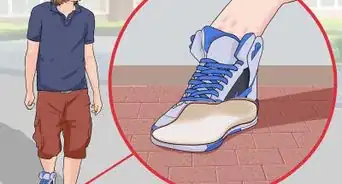
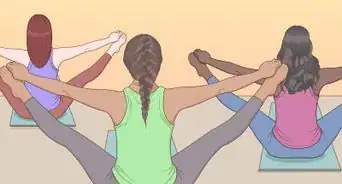











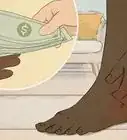
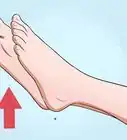





































Medical Disclaimer
The content of this article is not intended to be a substitute for professional medical advice, examination, diagnosis, or treatment. You should always contact your doctor or other qualified healthcare professional before starting, changing, or stopping any kind of health treatment.
Read More...